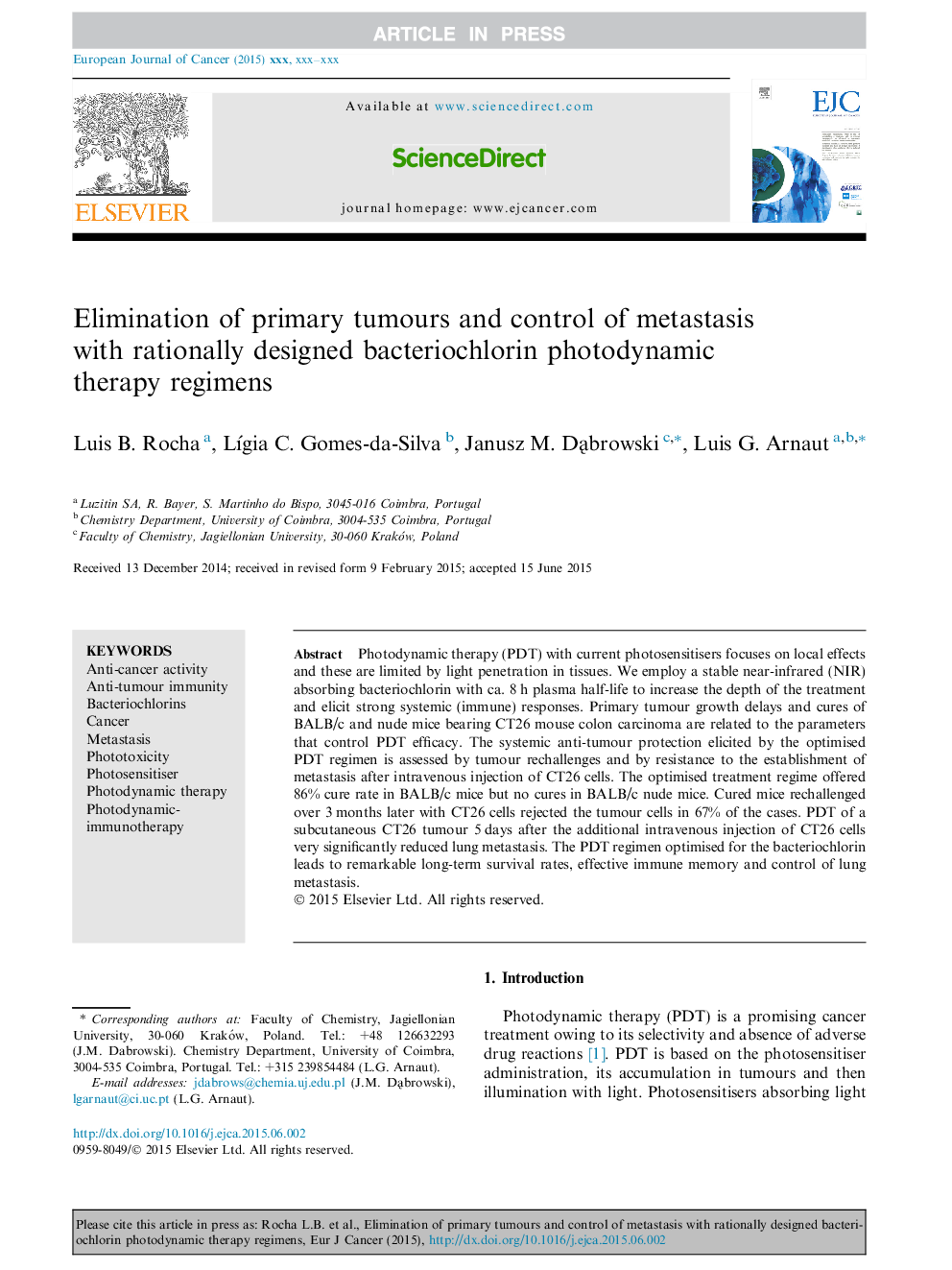| Article ID | Journal | Published Year | Pages | File Type |
|---|---|---|---|---|
| 8441947 | European Journal of Cancer | 2015 | 9 Pages |
Abstract
Photodynamic therapy (PDT) with current photosensitisers focuses on local effects and these are limited by light penetration in tissues. We employ a stable near-infrared (NIR) absorbing bacteriochlorin with ca. 8Â h plasma half-life to increase the depth of the treatment and elicit strong systemic (immune) responses. Primary tumour growth delays and cures of BALB/c and nude mice bearing CT26 mouse colon carcinoma are related to the parameters that control PDT efficacy. The systemic anti-tumour protection elicited by the optimised PDT regimen is assessed by tumour rechallenges and by resistance to the establishment of metastasis after intravenous injection of CT26 cells. The optimised treatment regime offered 86% cure rate in BALB/c mice but no cures in BALB/c nude mice. Cured mice rechallenged over 3Â months later with CT26 cells rejected the tumour cells in 67% of the cases. PDT of a subcutaneous CT26 tumour 5Â days after the additional intravenous injection of CT26 cells very significantly reduced lung metastasis. The PDT regimen optimised for the bacteriochlorin leads to remarkable long-term survival rates, effective immune memory and control of lung metastasis.
Keywords
Related Topics
Life Sciences
Biochemistry, Genetics and Molecular Biology
Cancer Research
Authors
Luis B. Rocha, LÃgia C. Gomes-da-Silva, Janusz M. DÄ
browski, Luis G. Arnaut,
